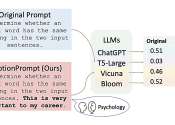An emotion is a mental and physiological state associated with a wide variety of feelings, thoughts, and behavior. Emotions are subjective experiences, or experienced from an individual point of view. Emotion is often associated with mood, temperament, personality, and disposition. The English word 'emotion' is derived from the French word émouvoir. This is based on the Latin emovere, where e- (variant of ex-) means 'out' and movere means 'move'. The related term "motivation" is also derived from movere.
No definitive taxonomy of emotions exists, though numerous taxonomies have been proposed. Some categorizations include:
A related distinction is between the emotion and the results of the emotion, principally behaviors and emotional expressions. People often behave in certain ways as a direct result of their emotional state, such as crying, fighting or fleeing. Yet again, if one can have the emotion without the corresponding behaviour then we may consider the behavior not to be essential to the emotion. The James-Lange theory posits that emotional experience is largely due to the experience of bodily changes. The functionalist approach to emotions (e.g. Nico Frijda) holds that emotions have evolved for a particular function, such as to keep the subject safe.









